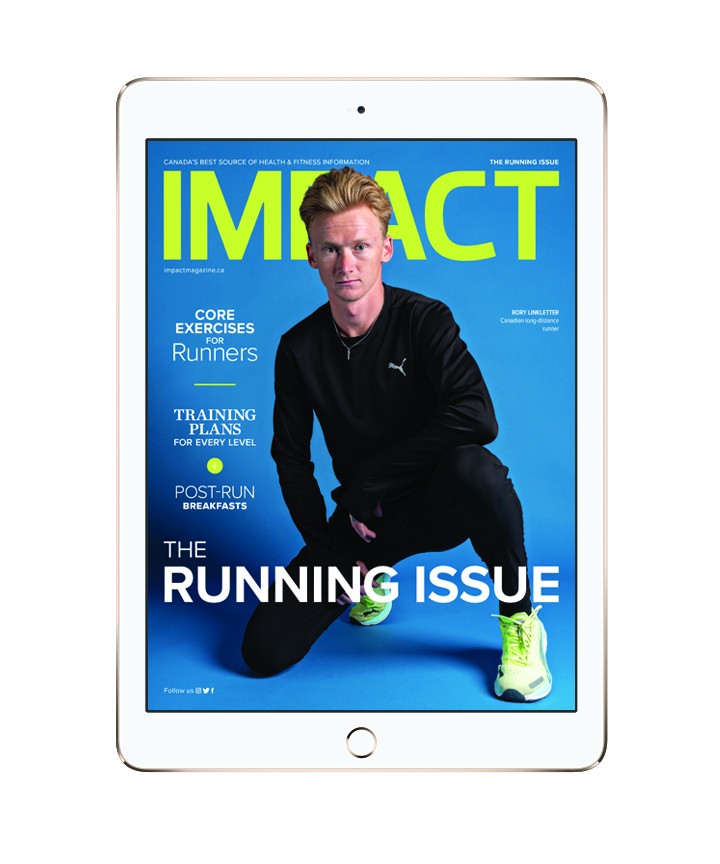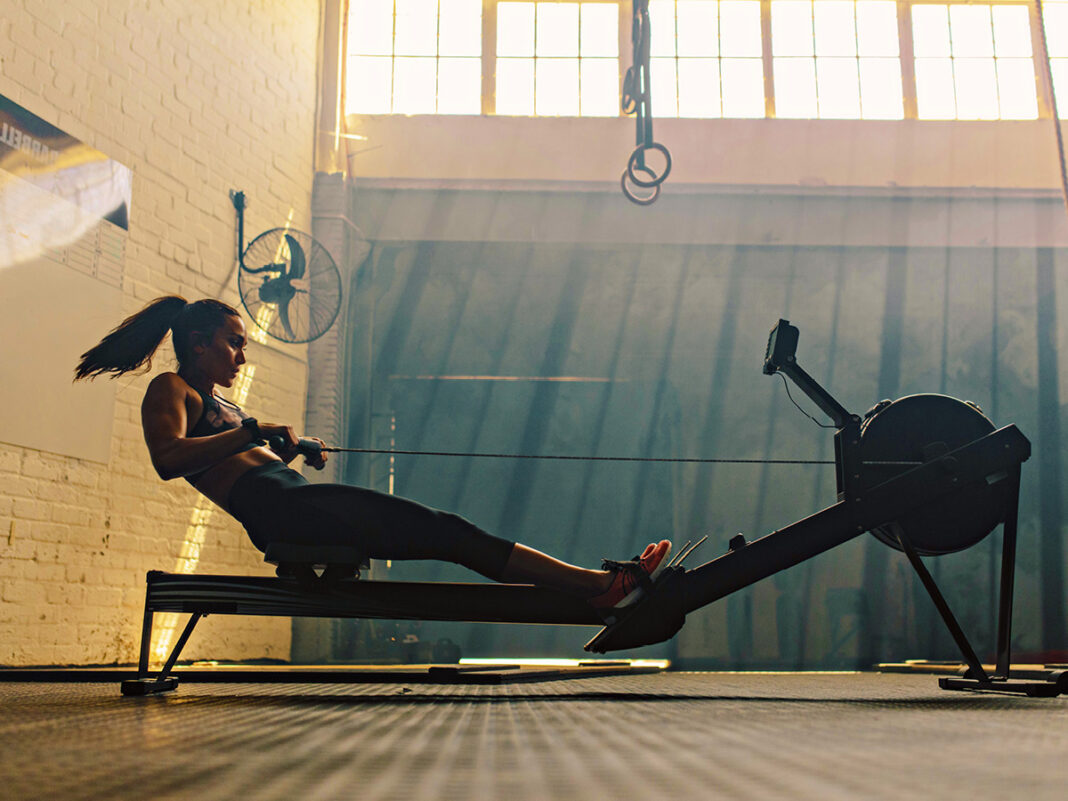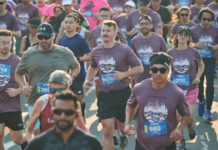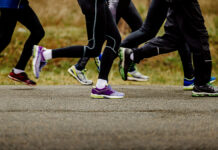Cross-training is a widely used approach to structure training programs for competitive athletes. “I usually train on the elliptical three to four times a week for 30 – 40 minutes to supplement my training,” says Canadian elite runner Natasha Wodak. “I normally run between 130 – 160 kilometres weekly during a marathon build, and cross-training is a great way to train aerobically without the same impact running has on my body.”
Studies point to the value of cross-training to transfer the cardiovascular training effects between modalities, such as swimming and cycling. For the average runner, cross-training is important not only for improving VO2 max, but also in those moments where you can’t run—whether due to injury, overtraining or simply psychological fatigue.
Benefits of cross-training
Cross-training with additional cardiovascular equipment will make you a better overall runner, says Andrea Smith, a run coach at BlackToe Running in Toronto, ON. “A key factor in developing aerobic fitness (VO2 max) is the volume of training, and specifically the volume of high-intensity training,” says Smith. “While running is effective for developing aerobic fitness, high-intensity running intervals can be very fatiguing. There is often a fine line between training stress, adaptation and recovery. Once you overstep that line, it compromises both your recovery and performance.”
Sean Allt, owner of Backcountry Strength in Chilliwack, B.C., says cross-training is essential to help mitigate the risk of repetitive-use injuries. “Running in particular can cause a lot of wear and tear on the joints, so supplementing your cardiovascular training with non-weight bearing activities, like cycling, rowing or swimming helps save your joints.”
Heart-rate training
To optimize cardiovascular training for running, you have to put in a lot of slow and low heart-rate training—70 – 80 per cent of total training time—alternating with high bursts of high heart-rate work for the remaining 20 – 30 per cent, says Lauren Roberts, a registered physiotherapist at The Running Physio in Toronto. “Sometimes, it can be risky to progress your runs longer, or do super hard workouts, because of an injury or another limiting factor. In this case, you can replicate your running workouts by approximating your heart-rate zones during a cross-training activity.”
Injury and choosing the best equipment
If you are injured and unable to run, choose an option that doesn’t strain the already injured area, says Roberts. “ITB syndrome (runner’s knee) tends to become more irritated when the knee is bent about 30 degrees—which is what the elliptical repeatedly puts you in, as opposed to the stationary bike which utilizes a greater range. But, if you have a hip injury that doesn’t like a lot of flexion, the elliptical will be a better choice.”
So, the verdict is in: don’t just run. These three pieces of cardio equipment are essential for your cross-training program.
Indoor bikes
Stationary bikes are effective not only for building strength in the muscles you use running, but also in helping develop your aerobic capacity. “Jumping on a bike is a low-impact way to strengthen quads, glutes and core, making you an overall stronger runner,” says Smith. “It can also help increase blood flow to your calves, quads, glutes and hamstrings, flushing out lactic acid helping them repair. The cycling motion itself can reduce muscle and joint stiffness and could be a key tool in injury prevention.”
One advantage of cycle training is increased training volume, which benefits aerobic fitness and conditioning. “Cycling workouts must be purposeful,” says Smith. “Cycling interval workouts are a great way to transfer fitness over to running—aerobic and anaerobic workouts that can be done on a bike that replicate the intensity of running and push your body hard, forcing it to adapt quickly.” There is also far less impact on joints on an indoor bike, making recovery from harder workouts faster.
Rowing machine
Allt explains that rowing is a great way to improve overall fitness, including upper body and core. “Fun fact: your paces on a rowing machine will closely mimic your running times when you get the technique down. You might only be able to run one tempo session or hard track session per week, but you can get a second equally hard workout in with significantly less strain on the body,” says Allt. “This also gives you a mental break so the next run feels fresher.”
Runners will sometimes focus on lower-body strength training and more running, forgetting the importance of the upper body, core and building overall strength. “Cross-training makes your entire body stronger and works your muscles in different ways. We all know the law of diminishing returns so adding variability via cross-training on the rower flattens the curve.”
Elliptical
The elliptical allows you to not only get a great aerobic workout, strengthening the heart, lungs and muscles—which builds stamina and endurance—it also takes the impact away from the joints, and is a great tool for higher-intensity interval training. “The motion of the elliptical is very similar to running,” says Wodak, “But I only use hard-style intensity on the elliptical when I’m injured, otherwise I keep my heart rate between 125 and 140 bpm.
A 2014 study (Orthopaedic Journal of Sports Medicine) found the elliptical significantly reduced weight bearing on joints, which makes it a great piece of equipment when returning to training. Wodak adds the mental health component is key: “When we are injured, we miss running and the endorphin high of a good workout. You can smash a good session on the elliptical and get those same endorphins. Great music and podcasts help.”
You may also like: Stepping Up Your Training with Ladders

Read This Story in Our 2023 Running Issue
Featuring Rory Linkletter, Canadian long-distance runner. Add to your bucket list with the top Destination Marathons Around the World. Train for 10 km right up to a marathon – plus a 70.3 program. Increase your strength and work your core with Canada’s Top Fitness Trainers. Enjoy plant-based, post-run breakfasts and so much more.
















